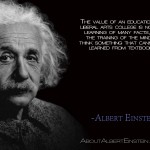This, my favorite semester so far, is coming to an end, and as I will ask my students to do a reflection, a practice I value and embrace, for once I decided to share my own. I’ll confess that I cannot escape reflecting on my practice, that it sometimes keeps me up at night, or more likely, forces me from bed in the small hours of the morning. “How could I have done that more effectively?” is the question that haunts me and makes me “whoever had the light on.”
Here’s my take:
- the interview– Caitlyn Cook (Thank you again, Caitlyn; see you next semester!) set us on the right trajectory with her library presentation about using an interview as a primary source, emphasizing both what it can do for research as well as its limitations as a single perspective in a larger discussion. I love the interview as a way to find a research topic, but students need to understand early on its usefulness. If the interview fails to serve as a springboard to a topic, I hope to add the use of a survey as a way to add “immediate voices” to the researched argument.
- the rhetorical analysis-I will never abandon this task, both because it teaches the “holy trinity” of argument: ethos, pathos, and logos, but also because it gives students an opportunity for purposeful collaboration and practice, and an awareness of the way an argument is constructed. I will introduce it differently, making sure we work on an argument together in diigo, (another goal: to teach the affordances of diigo, so students will realize its usefulness as a research and personal library tool), correctly annotating and labeling argument strategies before I ask the students to do the same. I will have an in-class, low-stakes rhetorical analysis assignment again; getting a first draft with substance done in an hour is a measure of preparation and a formative assessment. As long as it doesn’t weigh too much, it’s fine.
- blogging– Okay, I’m a serious fan! I love that the students read and respond to others. I will not abandon this, especially since it worked better than ever this semester and, I’d like to think, fostered a bit more community among class members. The height of success was in the assignment that the college students wrote about their research process to a specific audience—my eighth grade students. It was wonderful to see the awareness of audience, one of the trickiest aspects of writing, manifest itself. My eighth graders LOVED it, and have a new respect both for blogging and for research; I have terrific models to show the next semester’s students. I hope to expand this blogging interaction along research lines. I also intend to weight the exploratory blog posts more heavily and explicitly teach about hyperlinks and comments.
- class discussion– This is always the toughest part of class for me. Some students consistently don’t do the assigned readings. I had hoped the blogging would help, and it may have, but I need to work on this—more circles, more real-world based, start-with-experience introductions to the articles and essays we read. I am glad we spent time on censorship and micro-aggressions, and in light of all that has been happening lately on college campuses, I will address this topic again, but I’m thinking that the “purpose of college” narrative with references may be the best place to start.
- Office 365 ( and a digression)-I am not a fan of the Class Notebook for collaboration and will probably exclusively use “Shared Folders” in OneDrive or switch back to Google Drive which also affords hang-outs and easy collaboration. I am awaiting the students’ evaluation of this experiment before I make my final decision. What I do know is that asking students to get drafts in front of me before class, and on my schedule, no matter which vehicle I use, is still problematic. Life interferes with plans. To that end, I have relaxed a bit about my role in students’ success. (When an eighth grader while reading the college students’ blogs said, “Ms. Emerson, this student doesn’t have any blog posts,” I answered that some students don’t do their work, just as some of them don’t do their work. She quickly, and sincerely, asked, “Do you call their parents?”) I am working with adults and am not wholly responsible.
- researched argument and annotated bibliography– I know that MLA is the citation format used in this class, and in English classes generally, though working on a certfiicate in Educational Technology, I have had to use APA, and realize the arbitrary nature of citation. Without deriding the necessity of giving credit to sources, I have been less than comprehensive in teaching in-text citation and will need to improve on that next semester. I need to teach defining boundaries within the researched argument and generally need to improve instruction, using more of Gerald Graff and Robert Harris for practice. I will continue to emphasize the importance of the annotated bibliography as a way to “write inside” the paper (Graff). I also have some excellent examples to show students next semester from this class. The weight of this assignment will change, however, and allow me to give more emphasis on blogging.
- visual rhetoric– I want to make sure I build in time for infographics and visual information, photos, and political cartoons, as well as the ability to analyze and assess them. The Little Seagull provides a decent set of walk-through exercises with their online component linked to this blog. I want to make sure that I use visual data alongside each topic we discuss. An article from The Chronicle makes it clear how easily I could do this. Planning ahead is key.
All in all, it has been a learning semester. I cannot thank the students enough for traveling with me; they have made it all worthwhile.
